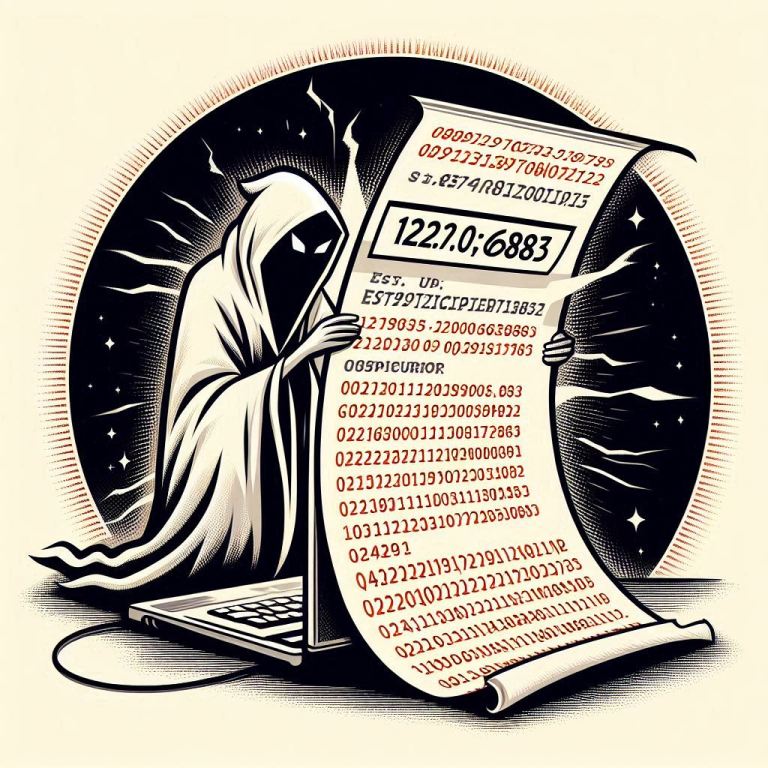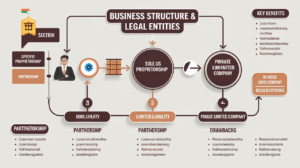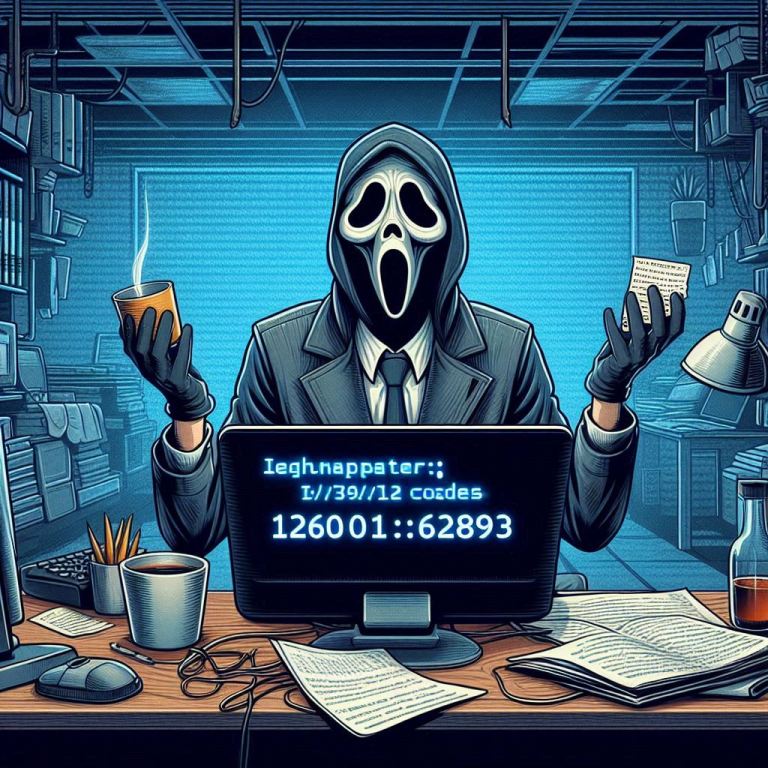Have you ever come across the mysterious code 127.0.0.1:62893 on your computer? It might have appeared in an error message while you were working on a project.
Don’t worry! This strange combination of numbers isn’t as complicated as it seems. Understanding it can help you solve some common computer problems. In this article, we’ll break down 127.0.0.1:62893 into simple terms, explaining what each part means and why it’s important.
You’ll learn that 127.0.0.1 is like your computer’s home address, and 62893 is just a specific door number. We’ll also discuss why you might see this code and what to do when it causes problems.
Whether you’re a curious beginner or someone who’s encountered issues with this address, you’ll find helpful information here.
What is 127.0.0.1:62893?

Let’s break this down into two parts:
- 127.0.0.1: This is a special address called “localhost.” It’s like your computer’s home address.
- 62893: This is a port number, akin to a specific door in your computer’s house.
When you see them together, it means your computer is trying to communicate with itself through a specific door.
Why is 127.0.0.1 Special?
127.0.0.1 is special because it always points to your computer. It’s like having a secret passage in your house that always leads back to your living room. This address is useful for:
- Testing websites without putting them on the internet.
- Checking if your computer’s network is working.
- Running programs that need to communicate on the same computer.
What Are Ports and Why Do They Matter?
Ports are like doors in your computer. Different programs use different doors to send and receive information. Some common ports are:
- Port 80: Used for normal web browsing.
- Port 443: Used for secure web browsing.
- Port 25: Used for sending emails.
The port number 62893 isn’t as common as these, but it’s sometimes used by a program called Memcached, which helps make websites faster.
When Might You See 127.0.0.1:62893?
You might see this address:
- When building a website or app.
- If you’re testing how programs communicate.
- In error messages when something goes wrong with a program.
Common Error: “Disconnected from the target VM, address: 127.0.0.1:62893”
This error often appears when using tools for writing code, like Visual Studio Code. It means the tool couldn’t connect to the program it was trying to test or debug.
Why Does This Error Happen?
There are a few reasons why you might see this error:
- The program you’re trying to test isn’t running.
- Another program is already using port 62893.
- Your computer’s firewall is blocking the connection.
- There’s a problem with the network settings on your computer.
How to Fix the Error?
Let’s go through some steps to fix this error:
- Check if the program is running:
- Look for the program in your list of running applications.
- If it’s not there, try starting it again.
- See if another program is using the port:
- On Windows, open Command Prompt and type:
netstat -ano | findstr :62893 - On Mac or Linux, open Terminal and type:
lsof -i :62893 - If you see a program using this port, you might need to close it or use a different port.
- On Windows, open Command Prompt and type:
- Check your firewall settings:
- Make sure your firewall isn’t blocking the program.
- You might need to add an exception for the program or port 62893.
- Restart your computer:
- Sometimes, a simple restart can fix network problems.
- Update your programs:
- Make sure you have the latest version of the program you’re using.
- Updates often fix bugs that can cause this error.
Step-by-Step Guide to Fixing Firewall Issues
If you think your firewall might be causing the problem, here’s how to fix it:
On Windows:
- Open the Start menu and search for “Windows Defender Firewall”.
- Click on “Allow an app or feature through Windows Defender Firewall”.
- Click “Change settings” and then “Allow another app”.
- Browse to find the program you’re trying to use and add it to the list.
On Mac:
- Click the Apple menu and go to System Preferences.
- Click on Security & Privacy.
- Go to the Firewall tab.
- Click the lock icon to make changes.
- Click Firewall Options.
- Click the + button to add the program you’re trying to use.
Is It Safe to Use 127.0.0.1:62893?
Using 127.0.0.1:62893 on your computer is generally safe. It’s just your computer talking to itself. However, there are a few things to keep in mind:
- Don’t open this port to the internet. It could let bad actors into your computer.
- Be careful when running unknown programs that use this address. They might be attempting something malicious.
- If you’re unsure why a program is using this address, it’s okay to ask for help.
Other Common Errors Related to 127.0.0.1:62893

Here are some other errors you might see:
- “Connection refused”
- This usually means the program you’re trying to connect to isn’t running.
- Try starting the program again.
- “Address already in use”
- This means another program is already using port 62893.
- You might need to close the other program or use a different port.
- “Network is unreachable”
- This could mean there’s a problem with your computer’s network settings.
- Try restarting your computer or checking your internet connection.
How to Check What’s Using a Port?
If you want to see what program is using a specific port, you can use these commands:
On Windows:
- Open Command Prompt.
- Type:
netstat -ano | findstr :62893 - You’ll see a list of programs using that port.
On Mac or Linux:
- Open Terminal.
- Type:
lsof -i :62893 - This will show you what’s using the port.
Using Different Ports
If port 62893 is causing problems, you can often use a different port. Here’s how:
- Look in the settings of the program you’re using.
- Find an option for “port” or “listen to address”.
- Change the port number to something else, like 62894.
- Restart the program.
Remember, some programs might not let you change the port easily. In that case, you might need to ask for help or consult the program’s manual.
When to Ask for Help?
If you’ve tried these steps and still have problems, it’s okay to ask for help. You could:
- Ask a friend who knows about computers.
- Look for help forums online for the specific program you’re using.
- Contact the company that made the program.
Learning More About Networking
If you want to learn more about how computers communicate, here are some topics to explore:
- IP addresses: Learn about different types of addresses computers use.
- Ports: Understand more about how ports work and what they’re used for.
- Firewalls: Learn how firewalls protect your computer and how to use them.
- Localhost: Dive deeper into how and why computers talk to themselves.
Real-World Examples
Here are some real situations where you might encounter 127.0.0.1:62893:
- Building a Website: You’re making a website and want to test it before putting it online. You set up a local server that uses 127.0.0.1:62893. This lets you see your website on your computer before anyone else can.
- Debugging an App: You’re writing an app and it’s not working right. You use a debugger that connects to 127.0.0.1:62893 to see what’s happening inside your app as it runs.
- Setting Up a Database: You’re learning about databases and setting one up on your computer. It uses 127.0.0.1:62893 to communicate with other programs on your computer.
Common Questions About 127.0.0.1:62893
Here are some questions people often ask about this topic:
- Q: Can other people see my 127.0.0.1:62893?
- A: No, this address only works on your computer. Other people can’t see or access it.
- Q: Do I need to worry about hackers using 127.0.0.1:62893?
- A: Not usually. This address is only for your computer to talk to itself. But be careful about running programs you don’t trust.
- Q: Can I change 127.0.0.1 to something else?
- A: It’s best not to change this address. Computers are set up to always use 127.0.0.1 as the local host.
- Q: What if I need to use a different port?
- A: You can usually change the port number in the settings of the program you’re using.
- Q: Is 127.0.0.1:62893 the same on all computers?
- A: 127.0.0.1 is the same on all computers, but the port number (62893) can vary depending on what program you’re using.
Tips for Avoiding 127.0.0.1:62893 Problems
Here are some ways to avoid problems with this address:
- Keep your programs up to date.
- Be careful about changing network settings you don’t understand.
- Use good antivirus software to protect your computer.
- Learn about the programs you use and how they work.
- Don’t open ports to the internet unless you need to.
The Future of Localhost and Ports
As technology evolves, the way we use localhost and ports might change too. Here are some potential developments:
- Increased use of cloud computing might alter how we test programs.
- New methods of program communication that don’t use traditional ports.
- Enhanced security features that change how localhost works.
Wrapping Up
127.0.0.1:62893 might seem confusing at first, but it’s just a way for your computer to talk to itself. Understanding what it means can help you fix problems and learn more about how computers work.
Remember:
- 127.0.0.1 is your computer’s home address.
- 62893 is just a door number that programs use.
- If you see errors, try the troubleshooting steps discussed.
- It’s okay to ask for help if you’re stuck.
By learning about this, you’re taking a big step in understanding how computers and the internet work. Keep exploring and learning!
Glossary of Terms
To help you understand this topic better, here’s a list of important words and what they mean:
- IP Address: A number that identifies a device on a network.
- Localhost: A special address (127.0.0.1) that always points to your computer.
- Port: A number that helps different programs on a computer talk to each other.
- Firewall: A security tool that controls what can connect to your computer.
- Debugger: A tool that helps find and fix problems in computer programs.
- Server: A computer or program that provides a service to other computers.
- Client: A computer or program that uses a service provided by a server.
- DNS: A system that turns website names into IP addresses.
- TCP/IP: The main set of rules that computers use to talk to each other on the internet.
Additional Resources
If you want to learn more about this topic, here are some good places to start:
- Online coding courses that teach about web development.
- Books about computer networking for beginners.
- YouTube videos explaining how the internet works.
- Local computer clubs or classes in your area.
Remember, learning about computers takes time. Don’t worry if you don’t understand everything right away. Keep practicing and asking questions, and you’ll get better over time!








